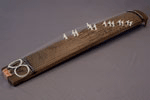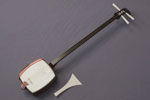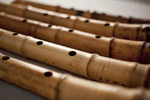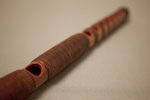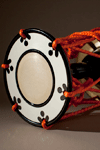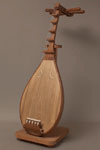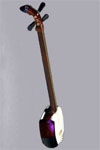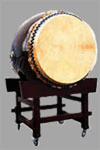
BIWA
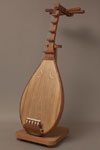
Biwa came to Japan in the form of the Chinese pipa. There are many types of biwa such as gagaku biwa used in gagaku imperial court music; mōsō biwa used in prayer and storytelling by blind monks; Heike biwa accompanying Tales of Heike; Satsuma biwa that developed in the modern era; and Chikuzen biwa popular since Meiji (1868-1912).
An ancient relic of a straight necked, five-string biwa can be found in the Shosoin treasure house of Todaiji Temple although just one piece remains. Other than this, there are basic biwa with four-strings and necks that curve backwards. As for modern biwa, instruments with five or more strings have been invented but the fourth and fifth string on most of the five string instruments produce the same pitch. Aside from the gagaku biwa used in gagaku imperial court music most biwa are used as accompaniments to storytelling or narration. Also, apart from attempts in contemporary music, biwa are not found in ensembles with other instruments.
Many narrative biwa pieces recount tales of war showcasing masculine expressions and, especially on the Satsuma biwa, also include thumping strums with the bachi or plectrum.
Frets on a biwa – called jū or chū – are tall and number either four or five. By pressing down between the frets the modern biwa is able to produce various pitches.
Music Library
- Gion Syouja
- Yamazaki Kyokusui(1906-2006),
Junko Tahara - Year UNK*
- play
- under construction
- Nasu no Yoichi
- Tachibana Kyokusyu(1848-1919)
- Year UNK*
- play
- under construction
- Youkou no Niwa
- Atsuki Sumi
- 1985
- play
- under construction
- Hana no Uta
- Junko Tahara
- 1980
- play
- under construction
*Name UNK:Name of composer unknown. Year UNK:Year of composition unknown.
Performance by Junko Tahara
In each episode, when staff notation is applicable, it is standardized by absolute pitch notation.



























